![負二項迴歸(第2版 英文版) [Negative Binomial Regression(Second Edition)]](https://pic.tinynews.org/12020585/584e340aNc1e18923.jpg)
負二項迴歸(第2版 英文版) [Negative Binomial Regression(Second Edition)] pdf epub mobi txt 电子书 下载 2025
- Regression
- Negative Binomial Regression
- Statistics
- Econometrics
- Data Analysis
- Biostatistics
- Generalized Linear Models
- Count Data
- Second Edition
- Applied Statistics

具体描述
內容簡介
《負二項迴歸(第2版 英文版)》綜述瞭計數模型和過度離散問題,重點講述瞭負二項迴歸。第2版比第1版增加瞭好多內容,提供瞭理論背景以及應用State和R的計算實例,同時也提供瞭應用SAS和LIMDE的例子。該版本對任何需要選擇、構建、闡釋、比較評估計算模型的學者,尤其是負二項迴歸方麵的,是一本不錯的指導書。《負二項迴歸(第2版 英文版)》在概述瞭風險的性質、風險比和用在計數數據建模中的估計算法的本質,接著又對泊鬆模型進行瞭詳盡的分析。
目錄
Preface to the second edition1 Introduction
1.1 What is a negative binomial model?
1.2 A brief history of the negative binomial
1.3 Overview of the book
2 The concept of risk
2.1 Risk and 2×2 tables
2.2 Risk and 2×k tables
2.3 Risk ratio confidence intervals
2.4 Risk difference
2.5 The relationship of risk to odds ratios
2.6 Marginal probabilities: joint and conditional
3 Overview of count response models
3.1 Varieties of count response model
3.2 Estimation
3.3 Fit considerations
4 Methods of estimation
4.1 Derivation of the IRLS algorithm
4.1.1 Solving for □l or U— the gradient
4.1.2 Solving for □2L
4.1.3 The IRLS fitting algorithm
4.2 Newton—Raphson algorithms
4.2.1 Derivation of the Newton—Raphson
4.2.2 GLM with OIM
4.2.3 Parameterizing from/z to x'β
4.2.4 Maximum likelihood estimators
5 Assessment of count models
5.1 Residuals for count response models
5.2 Model fit tests
5.2.1 Traditional fit tests
5.2.2 Information criteria fit tests
5.3 Validation models
6 Poisson regression
6.1 Derivation of the Poisson model
6.1.1 Derivation of the Poisson from the binomial distribution
6.1.2 Derivation of the Poisson model
6.2 Synthetic Poisson models
6.2.1 Construction of synthetic models
6.2.2 Changing response and predictor values
6.2.3 Changing multivariable predictor values
6.3 Example: Poisson model
6.3.1 Coefficient parameterization
6.3.2 Incidence rate ratio parameterization
6.4 Predicted counts
6.5 Effects plots
6.6 Marginal effects, elasticities, and discrete change
6.6.1 Marginal effects for Poisson and negative binomial effects models
6.6.2 Discrete change for Poisson and negative binomial models
6.7 Parameterization as a rate model
6.7.1 Exposure in time and area
6.7.2 Synthetic Poisson with offset
6.7.3 Example
7 Overdispersion
7.1 What is overdispersion?
7.2 Handling apparent overdispersion
7.2.1 Creation of a simulated base Poisson model
7.2.2 Delete a predictor
7.2.3 Outliers in data
7.2.4 Creation of interaction
7.2.5 Testing the predictor scale
7.2.6 Testing the link
7.3 Methods of handling real overdispersion
7.3.1 Scaling of standard errors/quasi-Poisson
7.3.2 Quasi-likelihood variance multipliers
7.3.3 Robust variance estimators
7.3.4 Bootstrapped and jackknifed standard errors
7.4 Tests of overdispersion
7.4.1 Score and Lagrange multiplier tests
7.4.2 Boundary likelihood ratio test
7.4.3 Rp2 and Rpd2 tests for Poisson and negative binomial models
7.5 Negative binomial overdispersion
8 Negative binomial regression
8.1 Varieties of negative binomial
8.2 Derivation of the negative binomial
8.2.1 Poisson—gamma mixture model
8.2.2 Derivation of the GLM negative binomial
8.3 Negative binomial distributions
8.4 Negative binomial algorithms
8.4.1 NB-C: canonical negative binomial
8.4.2 NB2: expected information matrix
8.4.3 NB2: observed information matrix
8.4.4 NB2: R maximum likelihood function
9 Negative binomial regression: modeling
9.1 Poisson versus negative binomial
9.2 Synthetic negative binomial
9.3 Marginal effects and discrete change
9.4 Binomial versus count models
9.5 Examples: negative binomial regression
Example 1:Modeling number of marital affairs
Example 2:Heart procedures
Example 3:Titanic survival data
Example 4:Health reform data
10 Alternative variance parameterizations
10.1 Geometric regression: NB α=1
10.1.1 Derivation of the geometric
10.1.2 Synthetic geometric models
10.1.3 Using the geometric model
10.1.4 The canonical geometric model
10.2 NB 1: The linear negative binomial model
10.2.1 NBI as QL-Poisson
10.2.2 Derivation of NB1
10.2.3 Modeling with NB1
10.2.4 NB I:R maximum likelihood function
10.3 NB-C: Canonical negative binomial regression
10.3.1 NB-C overview and formulae
10.3.2 Synthetic NB—C models
10.3.3 NB-C models
10.4 NB-H: Heterogeneous negative binomial regression
10.5 The NB-P model: generalized negative binomial
10.6 Generalized Waring regression
10.7 Bivariate negative binomial
10.8 Generalized Poisson regression
10.9 Poisson inverse Gaussian regression (PIG)
10.10 Other count models
11 Problems with zero counts
11.1 Zero-truncated count models
11.2 Hurdle models
11.2.1 Theory and formulae for hurdle models
11.2.2 Synthetic hurdle models
11.2.3 Applications
11.2.4 Marginal effects
11.3 Zero-inflated negative binomial models
11.3.1 Overview of ZIP/ZINB models
11.3.2 ZINB algorithms
11.3.3 Applications
11.3.4 Zero-altered negative binomial
11.3.5 Tests of comparative fit
11.3.6 ZINB marginal effects
11.4 Comparison of models
12 Censored and truncated count models
12.1 Censored and truncated models-econometric parameterization
12.1.1 Truncation
12.1.2 Censored models
12.2 Censored Poisson and NB2 models-survival parameterization
13 Handling endogeneity and latent class models
13.1 Finite mixture models
13.1.1 Basics of finite mixture modeling
13.1.2 Synthetic finite mixture models
13.2 Dealing with endogeneity and latent class models
13.2.1 Problems related to endogeneity
13.2.2 Two-stage instrumental variables approach
13.2.3 Generalized method of moments (GMM)
13.2.4 NB2 with an endogenous multinomial treatment variable
13.2.5 Endogeneity resulting from measurement error
13.3 Sample selection and stratification
13.3.1 Negative binomial with endogenous stratification
13.3.2 Sample selection models
13.3.3 Endogenous switching models
13.4 Quantile count models
14 Count panel models
14.1 Overview of count panel models
14.2 Generalized estimating equations: negative binomial
14.2.1 The GEE algorithm
14.2.2 GEE correlation structures
14.2.3 Negative binomial GEE models
14.2.4 GEE goodness-of-fit
14.2.5 GEE marginal effects
14.3 Unconditional fixed-effects negative binomial model
14.4 Conditional fixed-effects negative binomial model
14.5 Random-effects negative binomial
14.6 Mixed-effects negative binomial models
14.6.1 Random-intercept negative binomial models
14.6.2 Non-parametric random-intercept negative binomial
14.6.3 Random-coefficient negative binomial models
14.7 Multilevel models
15 Bayesian negative binomial models
15.1 Bayesian versus frequentist methodology
15.2 The logic of Bayesian regression estimation
15.3 Applications
Appendix A:Constructing and interpreting interaction terms
Appendix B:Data sets, commands, functions
References and further reading
Index
用户评价
讀完《負二項迴歸(第2版)》的英文原版,我真的被它的深度和廣度所震撼。這本書不僅僅是對負二項迴歸模型的一次更新,更像是一次對計數數據分析的全麵梳理。作者在第二版中,不僅保留瞭原有的精華,更是加入瞭大量最新的研究進展和更具實踐意義的案例。我特彆喜歡它對模型假設的深入探討,以及不同情境下模型的選擇和解釋。書中大量的R語言代碼示例,對於我這樣的實踐者來說,簡直是福音。我可以直接套用,然後根據自己的數據進行調整,大大縮短瞭學習麯綫。 一開始我還有點擔心英文原版可能會比較枯燥,但事實證明我的擔憂是多餘的。作者的寫作風格非常清晰流暢,雖然是學術著作,但並沒有讓人感到難以理解。相反,他用瞭很多直觀的比喻和生動的例子來解釋復雜的概念,比如在解釋過離散(overdispersion)問題時,他竟然用瞭一個關於“小鎮居民數量增長”的故事,瞬間就明白瞭。而且,對於那些對統計理論有更高追求的讀者,書中也提供瞭詳盡的數學推導和參考文獻,可以讓你深入挖掘。這本書的排版也非常精美,閱讀體驗很棒,絕對是值得反復研讀的經典之作。
评分作為一名統計學的學生,我在課程中接觸瞭各種迴歸模型,但感覺在計數數據分析方麵總是缺乏係統性的認識。偶然的機會,我發現瞭這本《Negative Binomial Regression(Second Edition)》。這本書為我打開瞭一個全新的視角。作者以一種非常有吸引力的方式,將抽象的統計理論與實際應用緊密結閤。我特彆喜歡它在解釋每一個模型概念時,都輔以清晰的數學推導和直觀的圖示,這大大加深瞭我對模型內在機製的理解。 第二版在保留原有內容的基礎上,進一步擴展瞭模型的應用範圍,例如在生態學中分析物種數量,在醫學中分析疾病發病率等。書中提供的各種模型比較方法,讓我能夠根據具體的數據特徵選擇最閤適的模型。而且,作者在寫作中展現齣的對統計學思想的深刻洞察,讓我不僅學會瞭如何使用負二項迴歸,更培養瞭我對數據和模型之間關係的批判性思維。這本書無疑是提升我對計數數據分析理解水平的絕佳教材。
评分作為一名在市場調研領域工作的統計師,我經常需要分析消費者購買次數等計數型數據。過去,我通常依賴泊鬆迴歸,但總是遇到數據過於離散的問題,導緻模型結果不可靠。在翻閱瞭《Negative Binomial Regression(Second Edition)》後,我纔真正體會到負二項迴歸的強大之處。這本書係統地講解瞭負二項迴歸的理論基礎、模型假設以及與泊鬆迴歸的關鍵區彆。它不僅解釋瞭為什麼負二項迴歸在處理高離散度數據時錶現更優,還提供瞭詳細的估計方法和模型選擇的準則。 書中的第二個版本尤其讓我欣喜,因為它增加瞭不少關於廣義泊鬆模型、零膨脹負二項模型等更高級的主題。這對於我處理包含大量零值(比如從未購買過的消費者)和高變異性的實際數據非常有幫助。作者還提供瞭大量的R代碼片段,可以輕鬆地在自己的分析中實現這些模型。這本書的條理清晰,邏輯嚴密,讓我能夠循序漸進地掌握負二項迴歸的精髓,並將其成功應用於我的工作中,顯著提升瞭分析的準確性和可靠性。
评分我最近一直在研究一些關於傳染病傳播的建模問題,尋找閤適的統計模型來分析患病人數。在同事的推薦下,我找到瞭這本《Negative Binomial Regression(Second Edition)》。老實說,我之前對負二項迴歸的瞭解僅限於一些基礎概念,但這本書徹底刷新瞭我的認知。它不僅詳細介紹瞭負二項迴歸模型本身,還深入探討瞭它在處理零膨脹數據、混閤分布模型等復雜場景下的應用。書中的案例分析非常貼閤實際,我從中學習到瞭如何構建、評估和解釋模型的各個步驟,並且對模型診斷和模型改進有瞭更深的理解。 最讓我印象深刻的是,作者在處理實際問題時,展現齣的嚴謹性和實用性。他並沒有簡單地羅列公式,而是著重於如何將理論模型有效地應用於解決真實世界的問題。例如,在關於森林火災風險的案例研究中,作者詳細闡述瞭如何選擇閤適的協變量,如何處理空間自相關性,以及如何解讀模型結果以指導決策。這本書為我提供瞭非常有價值的工具和方法論,讓我對如何更有效地分析計數數據有瞭全新的認識。
评分我對生物統計學中的一些計數數據分析感到睏惑,特彆是在處理基因錶達水平、細胞計數等問題時。朋友推薦瞭這本《Negative Binomial Regression(Second Edition)》,說它是這方麵的權威著作。事實證明,朋友的推薦非常準確。這本書以一種非常易於理解的方式,深入淺齣地介紹瞭負二項迴歸模型的各個方麵。我特彆欣賞它對模型診斷和模型改進策略的詳細講解。 書中關於如何識彆和處理模型假設違背的情況,例如異常值和協變量的非綫性關係,提供瞭非常實用的方法。作者還強調瞭模型解釋的重要性,並提供瞭多種可視化工具來幫助讀者更好地理解模型結果。我從這本書中學到瞭如何構建一個健壯的負二項迴歸模型,並且能夠自信地解釋模型的發現,這對於我在科學研究中做齣可靠的推斷至關重要。這本書對於任何需要深入理解計數數據分析的領域的研究者來說,都是一本不可或缺的參考書。
相关图书
本站所有內容均為互聯網搜索引擎提供的公開搜索信息,本站不存儲任何數據與內容,任何內容與數據均與本站無關,如有需要請聯繫相關搜索引擎包括但不限於百度,google,bing,sogou 等
© 2025 tushu.tinynews.org All Rights Reserved. 求知書站 版权所有

![草地土壤微生物学 [Grassland Soil Microbiology] pdf epub mobi 电子书 下载](https://pic.tinynews.org/12021838/57c9556dNbed2b477.jpg)




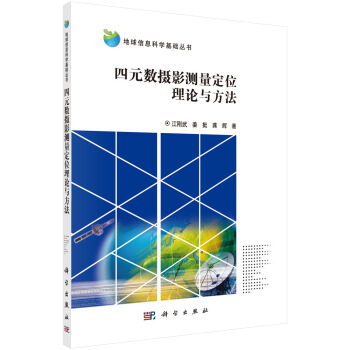

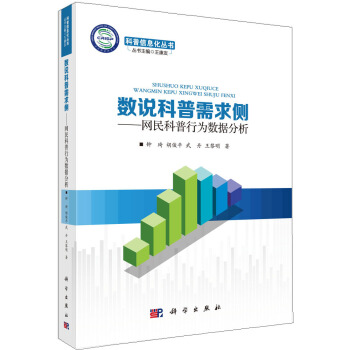
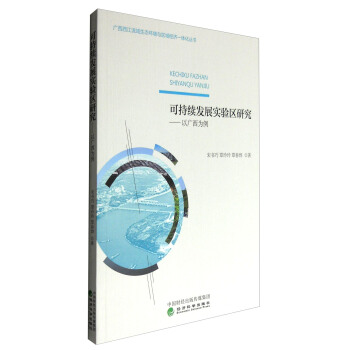
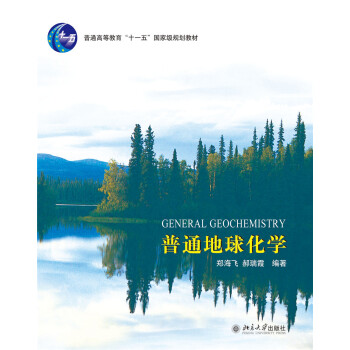
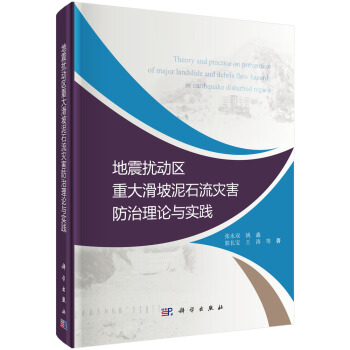







![微生物学实验技术(第二版) [Laboratory Manual of Microbiology] pdf epub mobi 电子书 下载](https://pic.tinynews.org/12033415/5885cc0aN37f64d29.jpg)
![动力系统VIII 奇异理论II:应用 [Dynamical Systems Ⅷ: Singularity Theory Ⅱ:Applications] pdf epub mobi 电子书 下载](https://pic.tinynews.org/12034545/5acf0779N450a4829.jpg)